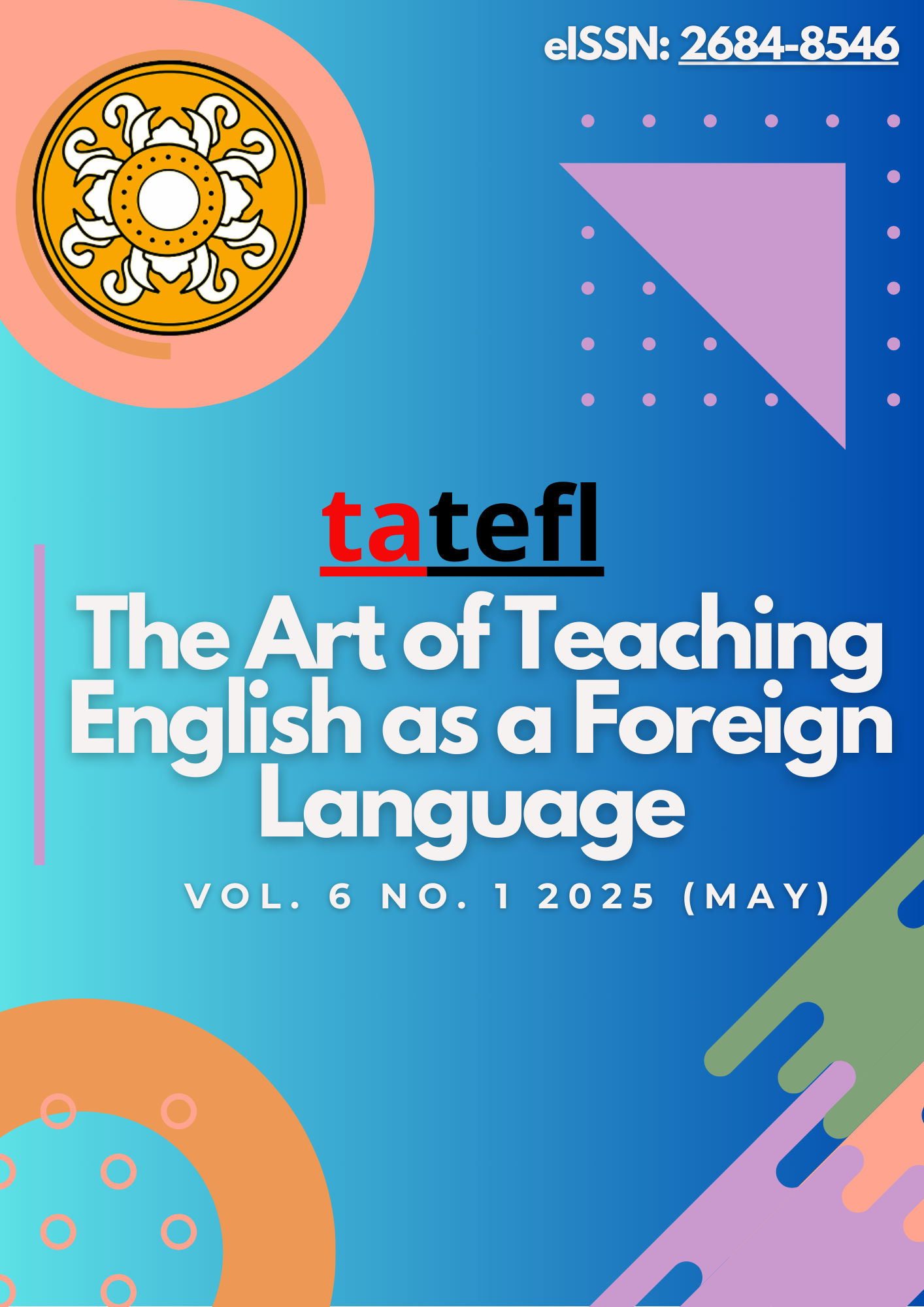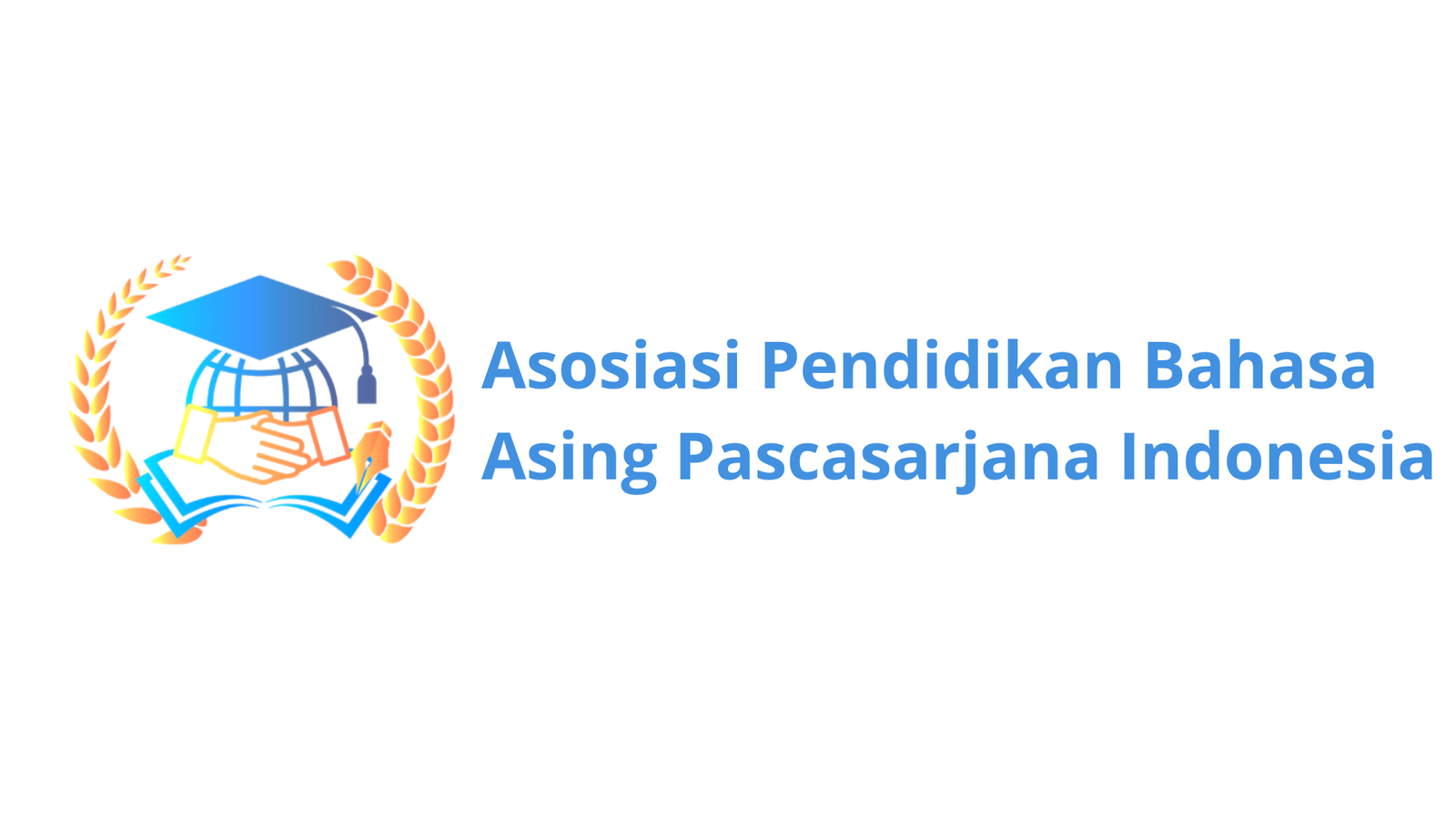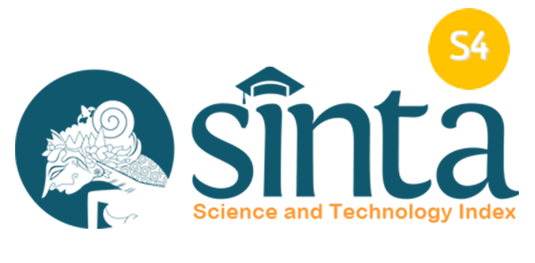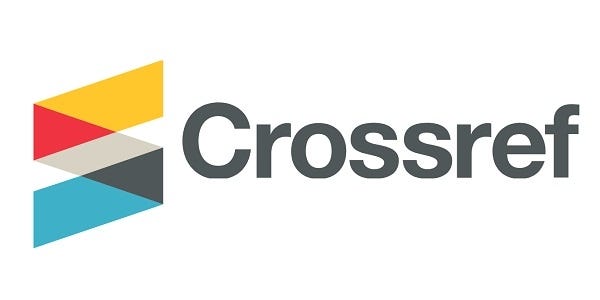The Use of Bilingual Flashcards as Learning Media to Teach English Vocabulary for Young Learners
DOI:
https://doi.org/10.36663/tatefl.v6i1.954Keywords:
Flashcards, Bilingual, English, Young Learners, VocabularyAbstract
This study aims to analyze the implementation of bilingual flashcards as a learning medium in teaching English vocabulary to kindergarten students at A Public School in Singaraja and explore teachers' opinions regarding its use. This study used a qualitative descriptive method involving three teachers as research subjects. Data were collected through participant observation, in-depth interviews, and open-ended questionnaires. The results showed that bilingual flashcards were implemented in the main activity during circle time, with each teacher having a different role. The learning strategies used were game-based, such as Show and Tell, Find the Flashcard, Match the Animal, and Role Play. In the pre-activity stage, teachers focused on creating a comfortable learning environment so that students were ready to receive the material. While in the post-activity stage, flashcards were used to review vocabulary through discussion, repetition games, and pronunciation exercises. Teachers also implemented formative assessment by observing students' understanding through verbal interaction and activity participation. Besides that, the three teachers argued that bilingual flashcards were an effective learning medium for teaching English vocabulary. This media helps to increase students' motivation, facilitates memorization and recall of vocabulary, improves vocabulary mastery, and makes learning more fun and interactive. However, this study also found several challenges, such as inadequate card size, the potential for increased noise in the classroom, demands for more creativity for teachers, less effectiveness for non-visual students, and the tendency for students to become dependent on flashcards.
Downloads
References
Aba, L. (2019). Flashcards as a media in teaching English vocabulary. AL-Lisan : Jurnal Bahasa (e-Journal ), 4(2), 170–179.
Alahmadi, A., Albaqami, S. E., & Foltz, A. (2023). Using technology-based vocabulary instruction inside and outside of the classroom. Frontiers in Communication, 8(May). https://doi.org/10.3389/fcomm.2023.1162219 DOI: https://doi.org/10.3389/fcomm.2023.1162219
Arsana, A. A. P., & Maharani, A. A. P. (2021). The use of flashcard in English vocabulary learning. JOSELT (Journal on Studies in English Language Teaching), 2(2), 25–33.
Barat, I., & Talukder, J. M. (2023). Exploring the impact of English language proficiency on business communication effectiveness: A comprehensive research analysis. International Journal For Multidisciplinary Research, 5(6). https://doi.org/10.36948/ijfmr.2023.v05i06.8809 DOI: https://doi.org/10.36948/ijfmr.2023.v05i06.8809
Berne, J. I. & Blachowicz, C. L. Z. (2008). What reading teachers say about vocabulary. Academia Journal, 62(4), 185-186 DOI: https://doi.org/10.1598/RT.62.4.4
Braun, V., & Clarke, V. (2006). Using thematic analysis in psychology. Qualitative Research in Psychology, 3(2), 77–101. https://doi.org/10.1191/1478088706qp063oa DOI: https://doi.org/10.1191/1478088706qp063oa
Dilago, S. P., Liando, V.F. & Kukus, F. (2022). Students’ perceptions of using song lyrics as a media to improve vocabulary mastery. JoTELL Journal of Teaching English, 1(5), 639–652.
Elisa, H., & Tuti, T. (2020). An evaluation of the use of flashcard for teaching vocabulary at kindergartens in Sintang. JETL (Journal of Education, Teaching and Learning), 5(2), 388. https://doi.org/10.26737/jetl.v5i2.2040 DOI: https://doi.org/10.26737/jetl.v5i2.2040
Erniwati, E., Mertosono, S. R., Arid, M., & Anggreni, A. (2021). Bilingual Approach: The role of flashcards in teaching vocabulary to young learners. Exposure: Jurnal Pendidikan Bahasa Inggris, 10(2), 381–389. https://doi.org/10.26618/exposure.v10i2.6162 DOI: https://doi.org/10.26618/exposure.v10i2.6162
Kapp, K. M. (2012). The gamification of learning and instruction: Game-based methods and strategies for training and education. Pfeiffer. DOI: https://doi.org/10.1145/2207270.2211316
Korosidou, E., & Griva, E. (2016). It’s the Same World through Different Eyes”: A CLIL project for EFL young learners. Colombian Applied Linguistics Journal, 18(1), 116–132. https://doi.org/10.14483/calj.v18n1.9305 DOI: https://doi.org/10.14483/calj.v18n1.9305
Liando, N. V. F., Tatipang, D. P., Tamboto, G., Poluan, M., & Manuas, M. (2022). Pictures as a learning media in teaching vocabulary. Jurnal Ilmiah Universitas Batanghari Jambi, 22(3), 1944. https://doi.org/10.33087/jiubj.v22i3.2832 DOI: https://doi.org/10.33087/jiubj.v22i3.2832
Mahendra, A., Dewi, N. L., & Wahyuni, L. (2021). Analysis of the formative assessment planning during online learning: A case study. JINOTEP (Jurnal Inovasi Dan Teknologi Pembelajaran): Kajian Dan Riset Dalam Teknologi Pembelajaran, 8(2), 157–166. DOI: https://doi.org/10.17977/um031v8i22021p157
Marianca, J. S., Liando, N. V. F., & Mamentu, A. C. (2022). Improving Students’ Vocabulary Through Words Mapping Strategy at SMP Negeri 6 Tondano. JoTELL Journal of Teaching English, 1(8), 897–911.
Maryanto, R. I. P., & Wulanata, I. A. (2018). Penggunaan media flashcard untuk meningkatkan pengenalan bentuk huruf siswa kelas I pada mata pelajaran Bahasa Indonesia di Sekolah ABC Manado. Pedagogia, 16(3), 305. https://doi.org/10.17509/pdgia.v16i3.12073 DOI: https://doi.org/10.17509/pdgia.v16i3.12073
Miles, M. B., & Huberman, A. M. (1994). Qualitative data analysis (2nd ed). Sage Publication.
Mutiah, S. D., Nakhriyah, M., HR, N. H., Hidayat, D. N., & Hamid, F. (2020). The Readiness of Teaching English to Young Learners in Indonesia. Jurnal Basicedu, 4(4), 1370–1387. https://doi.org/10.31004/basicedu.v4i4.541 DOI: https://doi.org/10.31004/basicedu.v4i4.541
Nation, P. (2017). How vocabulary is learned. Indonesian Journal of English Language Teaching, 12(1), 1-14. DOI: https://doi.org/10.25170/ijelt.v12i1.1458
Ningsih, N. L. A. B. H. (2023). The Importance of Game-Based Learning in English Learning for Young Learners in the 21st Century. The Art of Teaching English As a Foreign Language (TATEFL), 4(1), 25–30. https://doi.org/10.36663/tatefl.v4i1.492 DOI: https://doi.org/10.36663/tatefl.v4i1.492
Padmadewi, N. N., Artini, L. P., & Utami, L. P. R. A. (2020). Teacher readiness in promoting 21st century skills in teaching English as a foreign language at primary schools. SOSHUM : Jurnal Sosial Dan Humaniora, 10(3), 271–283. https://doi.org/10.31940/soshum.v10i3.1976 DOI: https://doi.org/10.31940/soshum.v10i3.1976
Padmadewi, N. N., Artini, L. P., Ratminingsih, M., & Adi, I. K. T. (2023). Elementary school teachers’ readiness in teaching technology-based literacy. International Journal of Elementary Education, 7(2), 299–310. https://doi.org/10.23887/ijee.v7i2.61675 DOI: https://doi.org/10.23887/ijee.v7i2.61675
Permana, I. G. Y. (2020). Teaching Vocabulary for Elementary School Students. The Art of Teaching English as a Foreign Language (TATEFL), 1(1), 1–4. https://doi.org/10.36663/tatefl.v1i1.56 DOI: https://doi.org/10.36663/tatefl.v1i1.56
Purnawan, N. A., Padmadewi, N. N., Budiarta, L. G. R. (2022). The effect of online gamification quiz application on vocabulary mastery for young English learners. Jurnal Inovasi dan Teknologi Pembelajaran, 9(1), 33–43. DOI: https://doi.org/10.17977/um031v9i12022p033
Ratminingsih, N. M., & Budasi, I. G. (2018). Local culture-based picture storybooks for teaching English for young learners. SHS Web of Conferences, 00016, 1–6. https://doi.org/10.1051/shsconf/20184200016 DOI: https://doi.org/10.1051/shsconf/20184200016
Sang, H. T., & Loi, N. Van. (2023). Task-based language teaching in Vietnam: Research trends, findings, and implications. European Journal of English Language Teaching, 8(2), 63–90. https://doi.org/10.46827/ejel.v8i2.4758 DOI: https://doi.org/10.46827/ejel.v8i2.4758
Sarifudin, M., & Rahayu, R. (2023). The implementation of bilingual flashcards to improve vocabulary mastery in Fiqh lesson for the first grader at SDNU Sleman Yogyakarta. Inovish Journal, 8(1), 71. https://doi.org/10.35314/inovish.v8i1.3135 DOI: https://doi.org/10.35314/inovish.v8i1.3135
Suharsiwi, S., Fadilah, N., & Farokhah, L. (2022). The use of audio-visual media in improving students’ reading comprehension and Sholat movements in online learning. Journal of Education Technology, 6(1), 19–28. https://doi.org/10.23887/jet.v6i1.40797 DOI: https://doi.org/10.23887/jet.v6i1.40797
Suhartono, S. & Laraswati, S. I. (2016). The Use of Visual Media in Teaching Writing. (2016). English Education:Journal of English Teaching and Research, 1(1). https://doi.org/10.29407/jetar.v1i1.274 DOI: https://doi.org/10.29407/jetar.v1i1.274
Syandri, G. (2015). A case study on the used of visual media in English instructional process at State Islamic Secondary School 1 Malang. Journal of Research & Method in Education, 5(4), 46–56.
Taylor, S. J., Bogdan, R., & DeVault, M. L. (2015). Introduction to qualitative research methods. Willey. DOI: https://doi.org/10.1002/9781394260485
Tirtayani, L. A., Magta, M., & Lestari, N. G. A. M. Y. (2017). Teacher friendly E-flashcard: A development of bilingual learning media for young learners. Journal of Education Technology, 1(1), 18. https://doi.org/10.23887/jet.v1i1.10080 DOI: https://doi.org/10.23887/jet.v1i1.10080
Widiantari, I. A. P. A., & Dewi, N. L. P. E. S. (2023). YouTube as an alternative learning media for independent bilingual young learners: A review. JET (Journal of English Teaching), 9(1), 83–97. https://doi.org/10.33541/jet.v9i1.4611 DOI: https://doi.org/10.33541/jet.v9i1.4611
Widya, E. R., Andriani, A., & Sulastri, F. (2020). Exploring flashcard as the media in teaching vocabulary to EFL young learners. Journal of Applied Linguistics, 1(1), 75–91.
Wong, L. L. C., & Nunan, D. (2011). The learning styles and strategies of effective language learners. System, 39(2), 144–163. https://doi.org/10.1016/j.system.2011.05.004 DOI: https://doi.org/10.1016/j.system.2011.05.004
Yuliantari, I. G. A. W., Padmadewi, N. N., & Budasi, I. G. (2021). The implementation of learning vocabulary using flashcard for young children through Google Classroom. Jurnal Pendidikan Bahasa Inggris Undiksha, 9(3), 271. https://doi.org/10.23887/jpbi.v9i3.38289 DOI: https://doi.org/10.23887/jpbi.v9i3.38289
Downloads
Published
How to Cite
Issue
Section
License
Copyright (c) 2025 Kadek Indira Putri Dewi Darsana

This work is licensed under a Creative Commons Attribution-ShareAlike 4.0 International License.
License Terms
- Attribution — You must give appropriate credit, provide a link to the license, and indicate if changes were made. You may do so in any reasonable manner, but not in a way that suggests the licensor endorses you or your use.
- ShareAlike — If you remix, transform, or build upon the material, you must distribute your contributions under the same license as the original.
- No additional restrictions — You may not apply legal terms or technological measures that legally restrict others from doing anything the license permits.


















